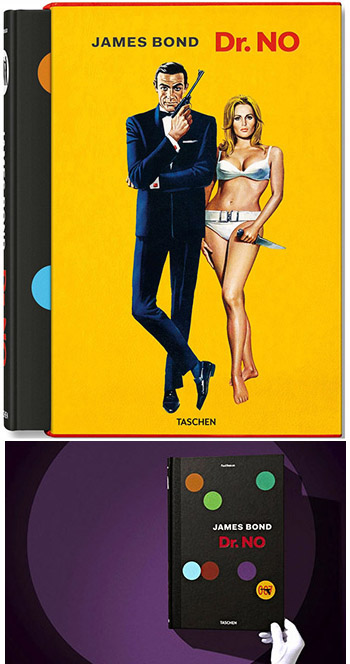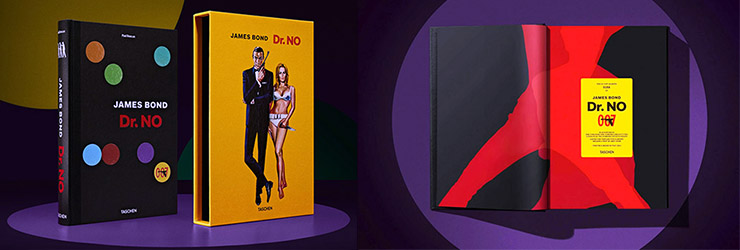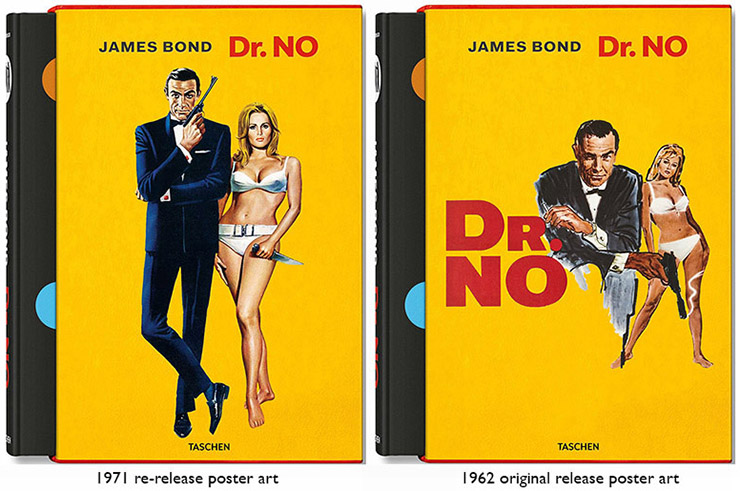 |

TASCHEN (founded in
1980) have arguably managed more than any other publisher to erase the
old and snobbish distinctions between ‘high’ and ‘low’ culture, by
featuring volumes devoted not only to James Bond but also, in the
cinematic field, Star Wars and Disney, as well as rock
musicians, pop art, and many other varied popular cultural
touchstones. Their apparent mission to democratize the concept of
‘culture’ by expanding it to encompass popular works, which loftier
publishers might still look down upon, is laudable – even though the
price point of many of their books renders them unaffordable for all
except those with the deepest pockets.
It is undeniable that
this 492-page book is a mighty achievement of 007 scholarship, for
which Duncan and his publisher deserve the utmost praise. Containing
1,007 images, this jaw-droppingly gorgeous project gives new meaning
to the terms ‘definitive’ and ‘lavish’. It is a particular joy to see
the brilliant work of the film’s on set stills photographer Bert Cann,
an often overlooked figure whose superb photography contributed much
to establishing early 007 iconography, and helped ensure Dr. No
was a huge commercial success. A majority of the images in the book –
including some of Cann’s – were completely new to me, including many
that have never before been officially published.
Text-wise, the early
sections of the book are necessary, but a touch serviceable and
functional – there are, for example, no fresh insights in the
introductory chapters on Ian Fleming and producers Albert R. Broccoli
& Harry Saltzman – therefore the information in these chapters is all
familiar verbiage to die-hard 007 aficionados.
Nonetheless, once the book enters the sections dealing with the film’s
day-to-day pre-production – production in Jamaica, at Pinewood
Studios, and the post-production process, it truly comes into its own,
with a wealth of new and valuable information emerging both in the
main text and images, which include many fascinating production memos
and documents. |


